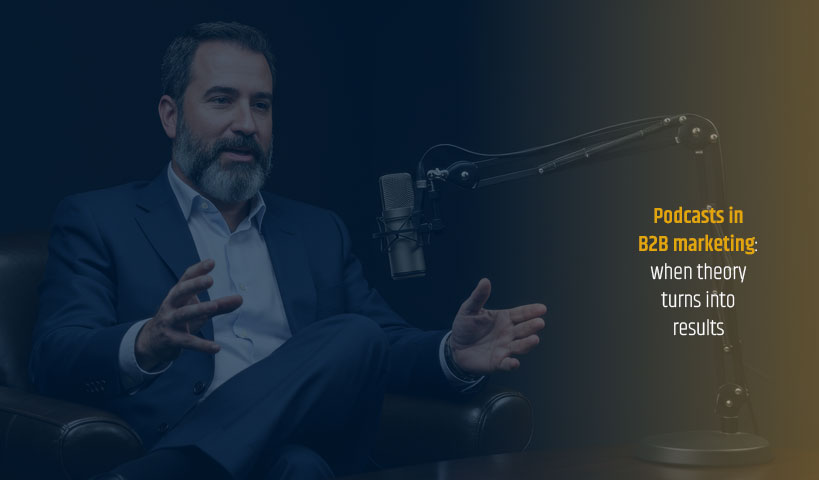
Back to the future in this short post… Almost five years ago, we wrote the eBook on the content crisis, where we wanted to generate awareness about the growing «infobesity» in marketing, especially due to the growing popularity of B2B content marketing.
Recently, we came across a post written by Sarah Taylor from Relevance that deals again and again with the same subject; how and why native content from companies and brands is not read on social networks or on the Web.
In the eBook, we wrote:
Many authors, such as Joe Pulizzihave noted this. This period of communicative enthusiasm generated a gold rush in web marketing and generated great “inbound” marketing strategies. But as everyone rushed to this social buffet offered at will, this “all you can eat” of the new marketing, we unwittingly created a monster traffic jam at the buffet, no one knows what exactly to consume as the offer was especially in content marketing. As a result, some of the strategies put in place from 2012-13 have found themselves in trouble because who are you to believe or who should you read in the general cacophony? The period of the ‘all-you-can-eat’ buffet will have been a reflection of an era…
In her post, Mrs. Taylor tries to give simple answers, five in fact, but which only touch upon the subject. It’s so much more complex though. Yes, there are these five elements: lack of strategy, limited publication, the use of the “dirty pitch”, lack of knowledge about the audience and, lack of authenticity. But, there’s a lot more.
There is the “Thought Leadership” expertise, the relevance of the subjects, the length of the texts, the SEO and, many other factors, including the knowledge of the importance of the various channels of dissemination. Not the platforms but the way the content is broadcasted on the platforms, i.e. the POE…
A well illustrated acronym defined in Chad Politt’s “Content Promotion Manifesto”

The arch-known principle of paid-owned-earned content.
In our eBook, we added:
In recent years, companies and agencies have used paid media (paid content) in their marketing strategies to promote their content with traditional advertising, promotional content and even sponsorship, which is related to the distribution of content.
They also used, in some cases, the channels offered by public relations, which is more related to the coverage, among other media, of content (earned media, earned content). The mass adoption of social networks, especially in the last five years, has had its corollary with “inbound” marketing and content marketing: a meteoric growth!
Traditional ways of doing things were quickly put aside to focus almost all efforts on the new channel of so-called native or proprietary content. It was about companies and agencies producing their own content on their own platforms like websites, blogs, social networks, newsletters and even email, to put forward content that they own. Companies and agencies have become broadcasters of content, broadcasting by their own means (owned media, owned content).
Producing more content and using ad nauseam, the “owned content” channel, has not always yielded the desired results. For this we invite you to read the rest of the eBook but coincidentally, we also came across a recent interpretation of the three famous circles and their interactions.
Five years later.

This graph has a lot to say but strictly on social networks. Among other things, 80% of content on social networks is supported by paid promotion (paid content) and, 90% of those who discuss brands on them, do not even consult the native pages of these brands or companies!
What do they do then? Nothing simple or old like Web 2.0… Thus 70% of them rely on the “power of recommendation” and curation and, by the intervention of third parties such as influencers or curators (earned content).
What this new illustration tends to demonstrate is that paid promotion (paid content) works through intermediaries and no longer through efforts to promote native content among brands or companies. This trend has been noticed for some time with the rise of influencers. Making business with them also means paying them, taking out your $$$. The “paid content” runs through them now…
And when we talk about this subject, who comes to mind immediately? The Youtubers and Instagrammers, who make a fortune in promoting brands, sometimes companies, especially restaurants, hotels and travel. But for other companies, it is other influencers that are more important and strategic. Who are they?
To find out, read the post: Influence in Marketing: Our Top 30 of 2019 and if you want to know even more, contact our specialists.
We suggest in complementary reading, this post on Frédéric Gonzalo’s blog: Content Marketing Is Not A Panacea . And as if to put things in perspective LaPresse published this article: “How to become an influencer (by cheating)”. A murderous article about influencers on Instagram…




